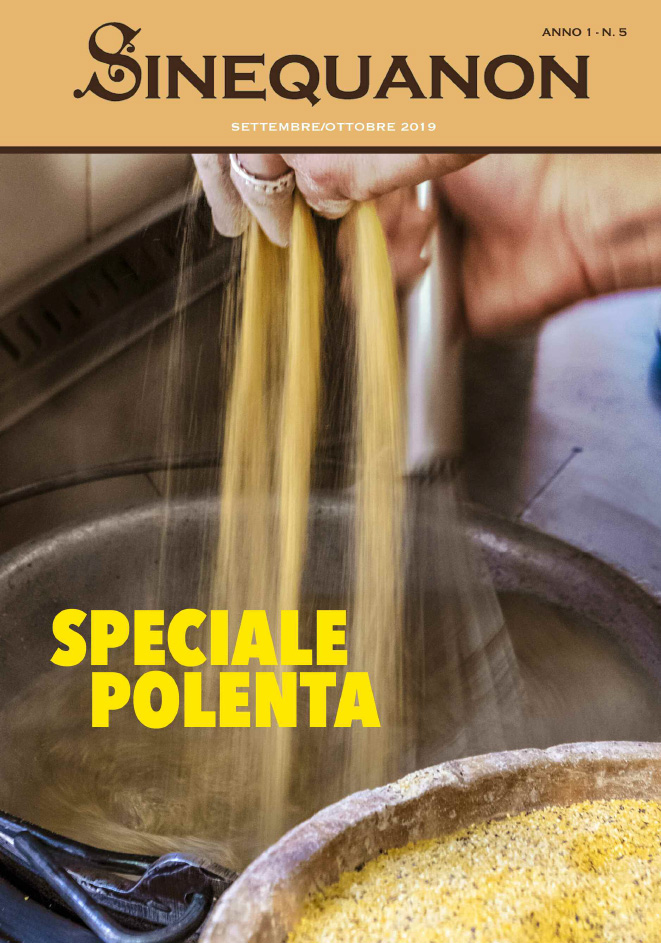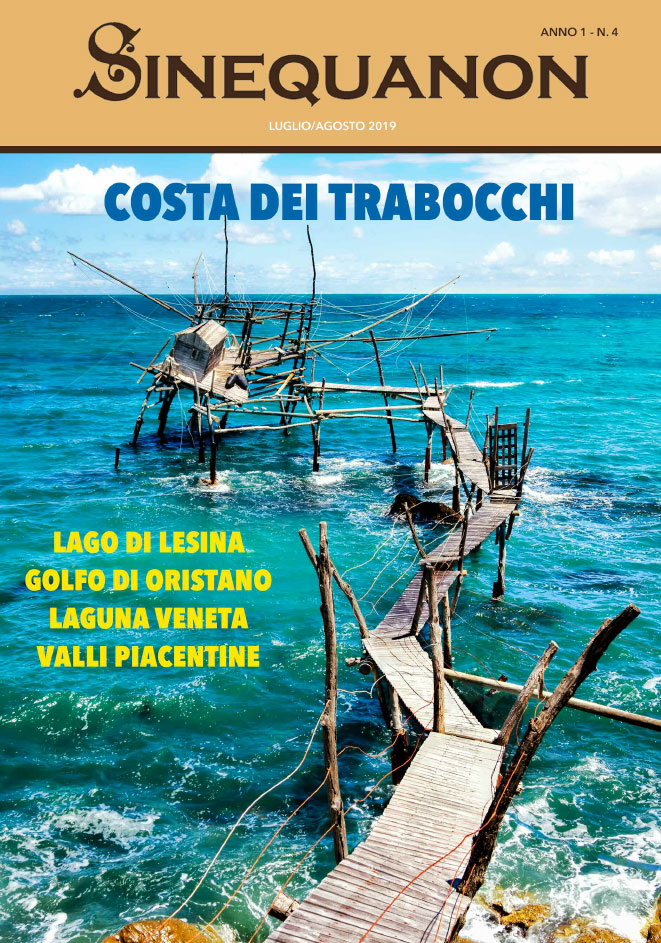Text and Photos by Pamela McCourt Francescone
It was a grey and heavy morning and the weather was not an invitation to relax on the charming beach of Si Ho Playa. Then someone suggested a trip to the nearby town of Champoton and, half an hour later we were outside the hotel, waiting for the bus which runs between the state capital Campeche and the little fishing town. The bay of Champoton is known as the ?bay of the ugly fight? for that day in March 1517 when a violent storm forced the Spanish troops of Francisco Hernandez de Cordoba to seek refuge in the bay where they were attacked by the army of the Maya leader Moch Cuoch who routed the Spaniards, leaving them to lick their wounds.
We had to stand on the 20-minute ride into town as the bus was already full. Many of the passengers were sleeping thanks to the comfortable seats and the air conditioning which, to tell the truth, was more of a hindrance than anything else for those of us standing up who had to put up with the blasts of icy air which streamed down onto our heads.
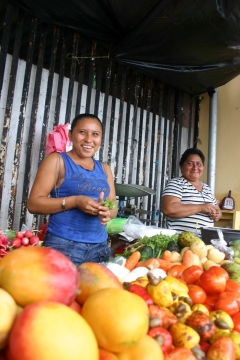
We got off at the terminus which is right in front of the famous bay and next to the colourful local market stalls groaning with fruit and vegetables, clothing and shoes. The people of Campeche are known as being particularly cordial and courteous. In fact the word Campechiano is listed in the dictionary as meaning someone who is exceptionally kind.
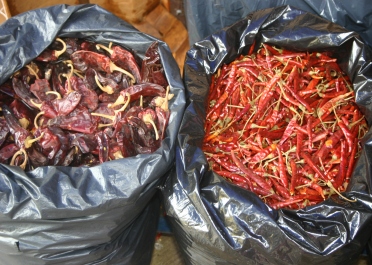
And the women in the market greeted us with warm smiles, inviting us to try the wide range of local fruits. Some of the group found it hard to resist, and stocked up on yellow and orange mangoes, small juicy limes and even bags of dried chilli peppers: red and yellow and black and in all shapes and sizes.
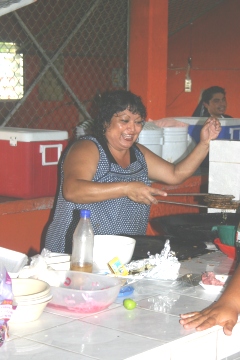
In one corner two large ladies were frying fritters in wide pans of smoking, boiling oil Someone was looking for sandals and was delighted to discover just the right size they even matched the dress ? on a well-stocked shoe stall. Leaving the market we ran into a street vendor with an array of brightly coloured hammocks.
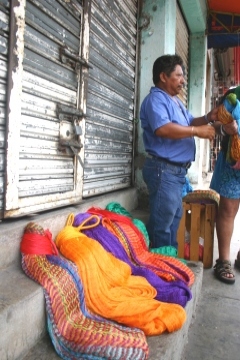
This meant another stop and more bargaining and, as few of the group were able to resist the idea of swinging lazily in a Mexican hammock once back at home, the hammocks sold like hot cakes to the vendor?s obvious delight.
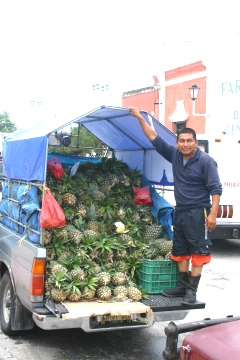
Next to the town hall, on the central plaza, standing on the back of a small van, a boy was selling fresh pineapples. There must have been thousands of the fuits stacked into the little van.
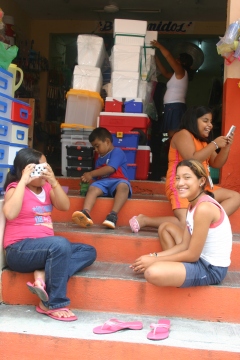
Not far away, sitting on the steps of a shop, four children were playing cards. Three of them were amused at having their photo taken but one of them shyly insisted on hiding behind the playing cards.
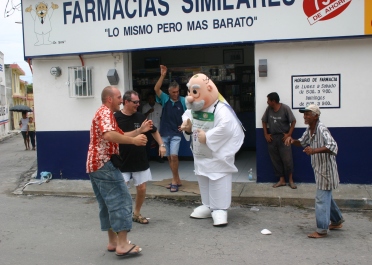
Leaving the main square we headed down a side street to visit what we had been told was Champoton?s main church. Turning a corner we came across an unexpected and amusing scene. Outside a chemist shop an oversize cartoon-like character, dressed as a doctor, was bouncing gaily about doing a clumsy kind of dance while some passers-by, including a bare-footed elderly gentlemen, had joined in his antics.
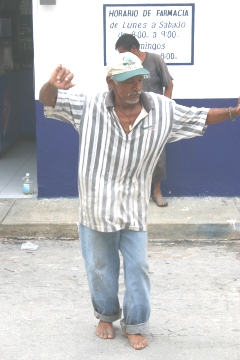
The old man moved with true grace, his innate rhythm and style typical of so many Latin American peoples. A sign over the chemist said ?The same but less expensive,? and the bouncy doctor?s advertising stunt did the job because some of our group, attracted by the low prices, bought huge supplies of vitamins, integrators and other over-the-counter medicines.

At the end of the road a man was silhouetted against the sky. He was on top of a tall ladder, which was leaning against an electricity pole, in the middle of a tangle of telephone wires. Like a large spider in the middle of a strange web. His assistant, at the foot of a ladder, was watching a television screen on the back of a small van. ?Bueno????bueno,? he would shout up every time a few squiggly lines appeared on the screen, obviously showing that the spider-man had hit on the right wire.
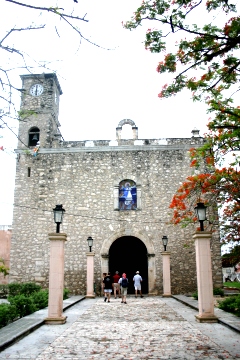
And so we came to the church. Not the Rococo-colonial type church we had been expecting but an edifice in grey stone with a small belfry on the top. A priest and an altar boy waited outside the door. The priest looked somewhat surprised as our group, laden down with hammocks, plastic bags and cameras, approached. Someone asked an old lady why the priest was waiting outside. ?For the bride,? she replied. Our reaction obviously broke the ice as the priest nodded and smiled.
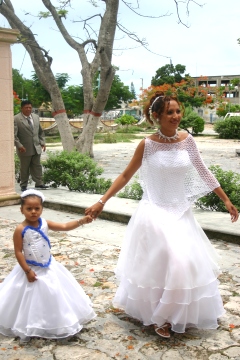
A few minutes later the bride arrived with her little bridesmaid, a few relations and a nervous, profusely sweating young man clutching a tie in his hand. She was very pretty and the bridesmaid by her side, in a white and blue dress, was like a doll. Not in the least bit perturbed to find a noisy group of tourists outside the church, the bride seemed to enjoy the attention and posed happily for the photographs. When the wedding guests realised we were Italian they broke into broad smiles and the priest, on learning that some of us were from Rome, nodded and smiled benignly murmuring??? ?Si???la ciudad del Papa?.
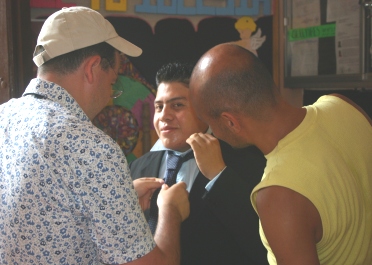
As the bride got ready to enter the church the young man with the tie, who was already inside, was trying desperately to knot it around his neck. The more he tried the more it slipped through his trembling fingers. The boys in our group did not have to be asked twice. One of them slipped the tie around his own neck, knotted it with great expertise and then, widening it, slipped it off his neck and onto the neck of the bridegroom, who, deeply relieved, pulled out a hanky to wipe his perspiring face as his bride made her way slowly up the aisle behind the priest and the altar boy.
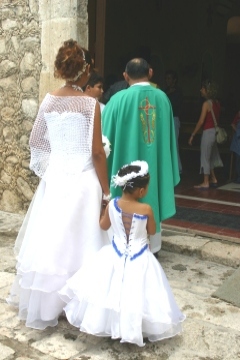
There was just time, before returning to the bus terminus, to stroll along the bay where one of the group took out a catapult he had bought in the market and vainly attempted to make the thousands of cormorants in the mangroves take flight. But the birds, perhaps given the sultry mid-day heat, refused to be frightened from their cool green perches by a few desultory pebbles. It was the end of a morning which had allowed us for a few short hours to enjoy the most genuine side of Mexico, made up of amusing situations, unusual encounters and of happy, smiling and welcoming people. The people of Campeche.

